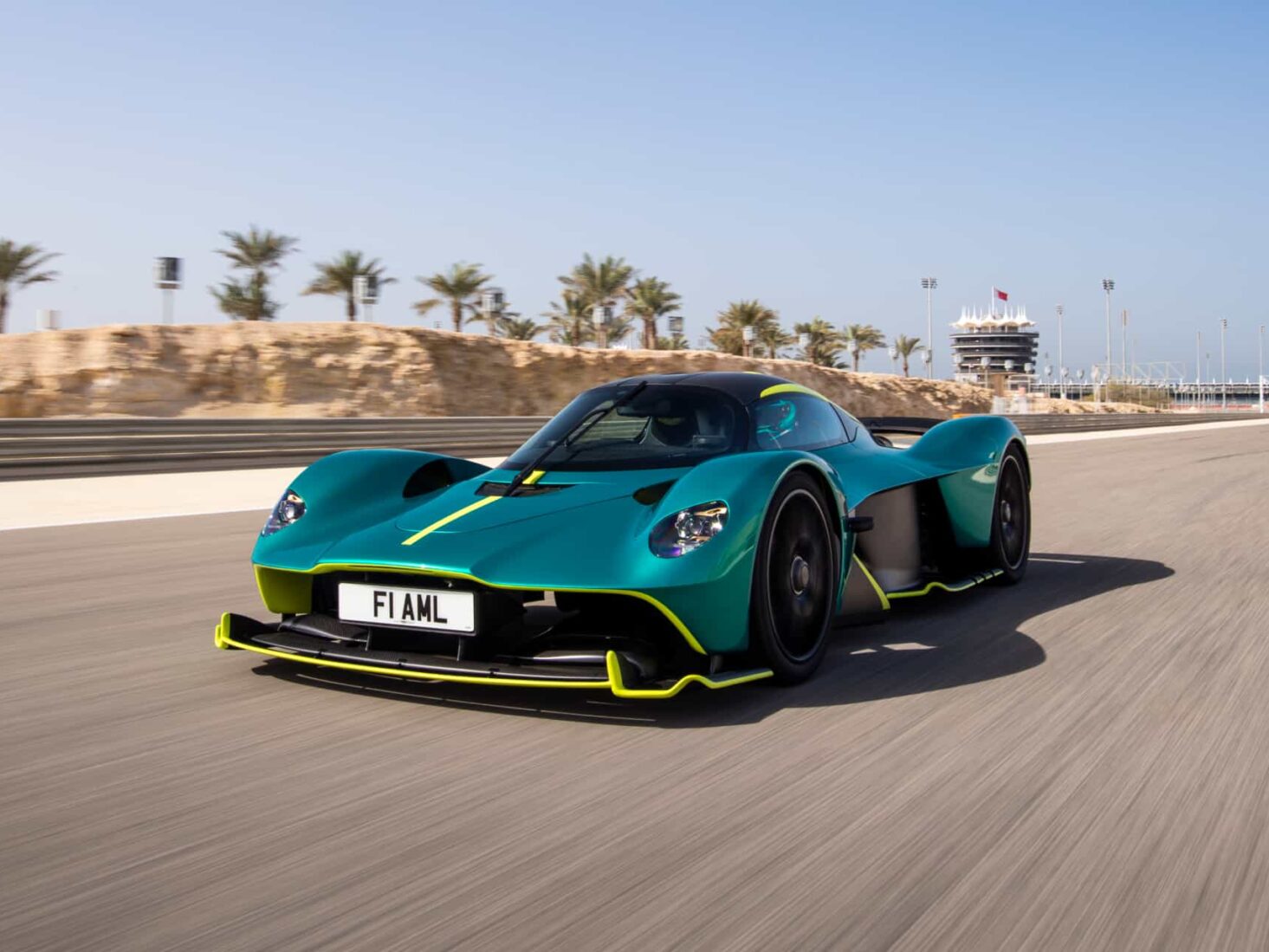
Aston Martin’s first hypercar, the Valkyrie, is (finally) here
A world-first drive of the British marque’s long-overdue hypercar proves that the Valkyrie was worth the wait
The Aston Martin Valkyrie has been a long time coming. Beset with technical issues, the launch of the marque’s first hypercar was delayed multiple times. At the 2021 Goodwood Festival of Speed, it had the misfortune of breaking down. It’s also currently the focus of a £150 million lawsuit related to unpaid deposits by two Swiss-based car dealers.
And yet, just like James Bond at the wheel of his favourite British getaway car, against the odds the 250mph coupé refused to give up and die. Now, six years after the concept was first unveiled, the most astonishing car Aston Martin has ever made is finally here. And it’s a £2.5 million homage to what can be achieved when the automotive rulebook is thrown out of the window.
The work of F1 design guru Adrian Newey – the engineer behind more than 190 grand prix wins – the Valkyrie is, essentially, a Formula 1 car for the road, delivering 1,140bhp and capable of 0-60mph in 2.5 seconds.
Hurtling around the Bahrain International Circuit in blistering heat, I’m starting to understand why, despite everything that has troubled this remarkable car since it was first announced in 2016, Aston Martin was determined to make the Valkyrie a reality.
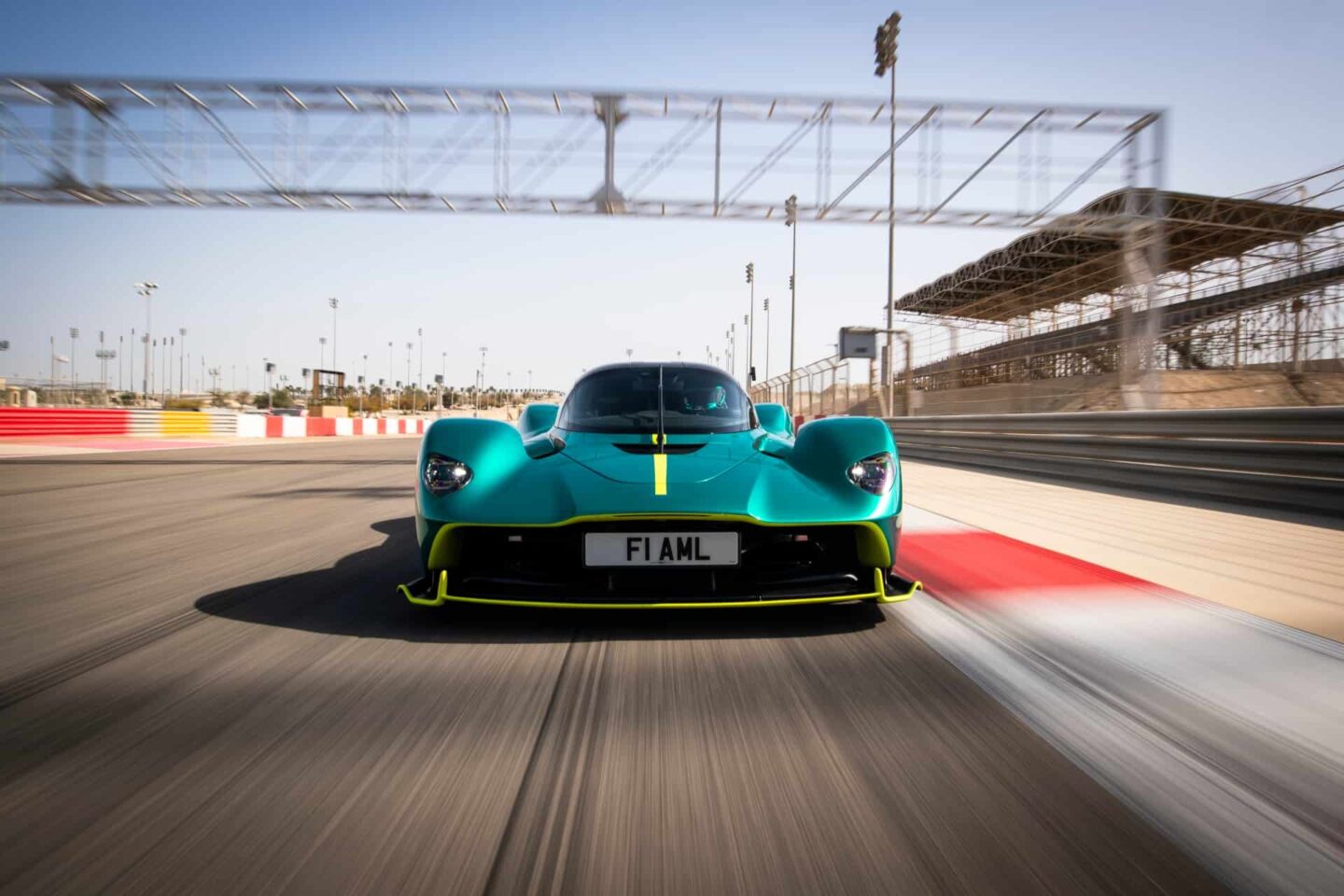
I might be wearing a helmet and race suit behind the detachable, F1-style steering wheel, but this is a car that can be legally driven around the streets of London. That includes number plates, a rear-view door camera system and a must-have suspension raise button – to creep over all those speed bumps.
Still, it’s almost inconceivable to imagine the Valkyrie anywhere else than on a racetrack. It’s so staggeringly quick that the two-seater could probably outpace a speed camera. How fast? The first grand prix of the 2023 F1 season was held in Bahrain earlier this month. The race saw Max Verstappen and co. scream down the home straight and into the first corner at just over 200mph. On the same track, I hit 187mph. Of course, anyone can drive fast in a straight line, but it just goes to prove how much driver confidence the Valkyrie’s incredible aerodynamic downforce and handling can inspire after just three laps.
A naturally-aspirated, 6.5-litre V12 engine created by British engineering firm Cosworth screams as I flick through the gears in Track mode, the most dynamic of three settings. There’s no ‘drive’ button in a Valkyrie – every change of the ‘old-school’ single clutch, seven-speed sequential gearbox is made via the paddle shifters.
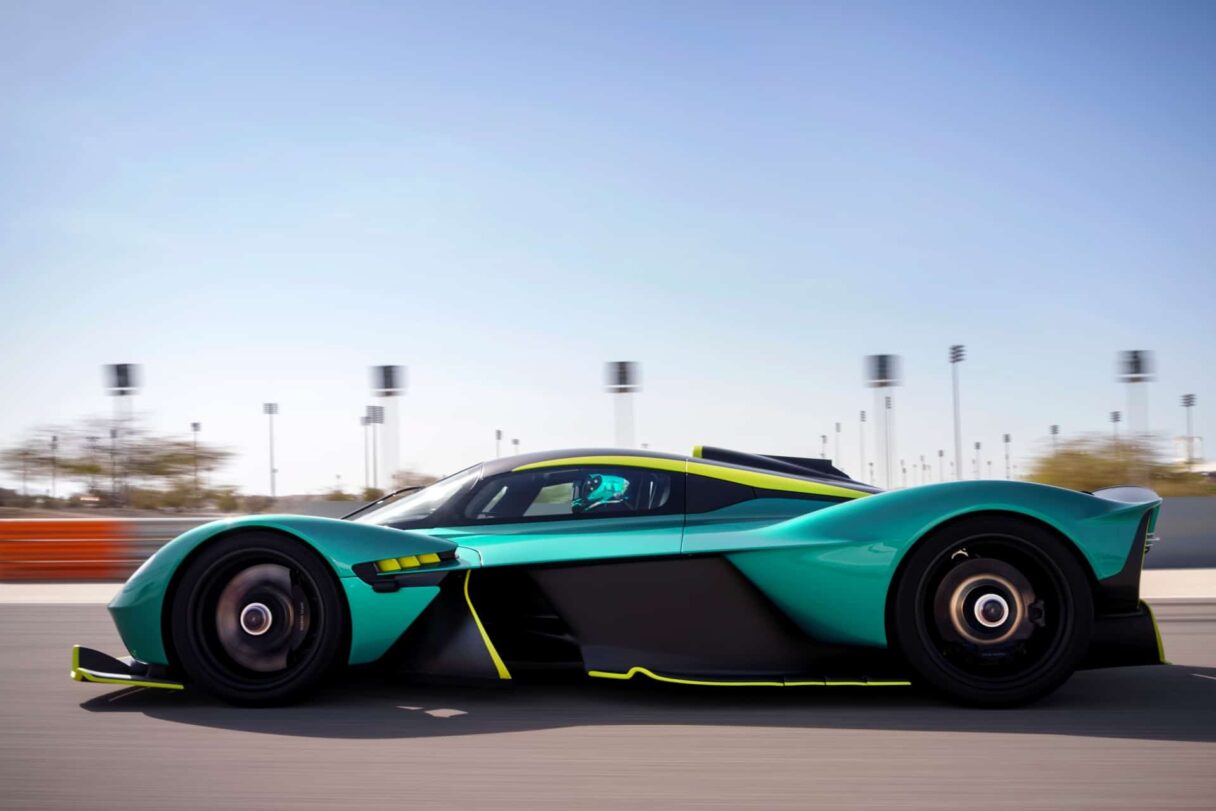
Grip is phenomenal but it’s the sheer shove-in-the-back power of the Aston Martin as it exits bends that astonishes most. Then comes the sting in the tail – an extra boost of 160bhp provided by a rear-mounted, Rimac-sourced hybrid system. Those same 1.7 kWh batteries power the Valkyrie’s reverse gear.
The car, capable of a head-spinning 11,100rpm, is silly quick, but unlike the two F1 cars I’ve driven, the Valkyrie is also remarkably easy to steer, with mid-engine balance and that epic downforce to keep everything firmly glued to the track.
Harnessed into a teardrop-shaped cockpit, my modestly-sized cocoon is air-conditioned and surprisingly relaxed. All the driving controls are on the oblong-shaped steering wheel, while a central screen operates the ventilation and navigation. If you don’t like the howl of a 12-into-one exhaust, Aston Martin offers bespoke headphones for music, instead of weighty door speakers.
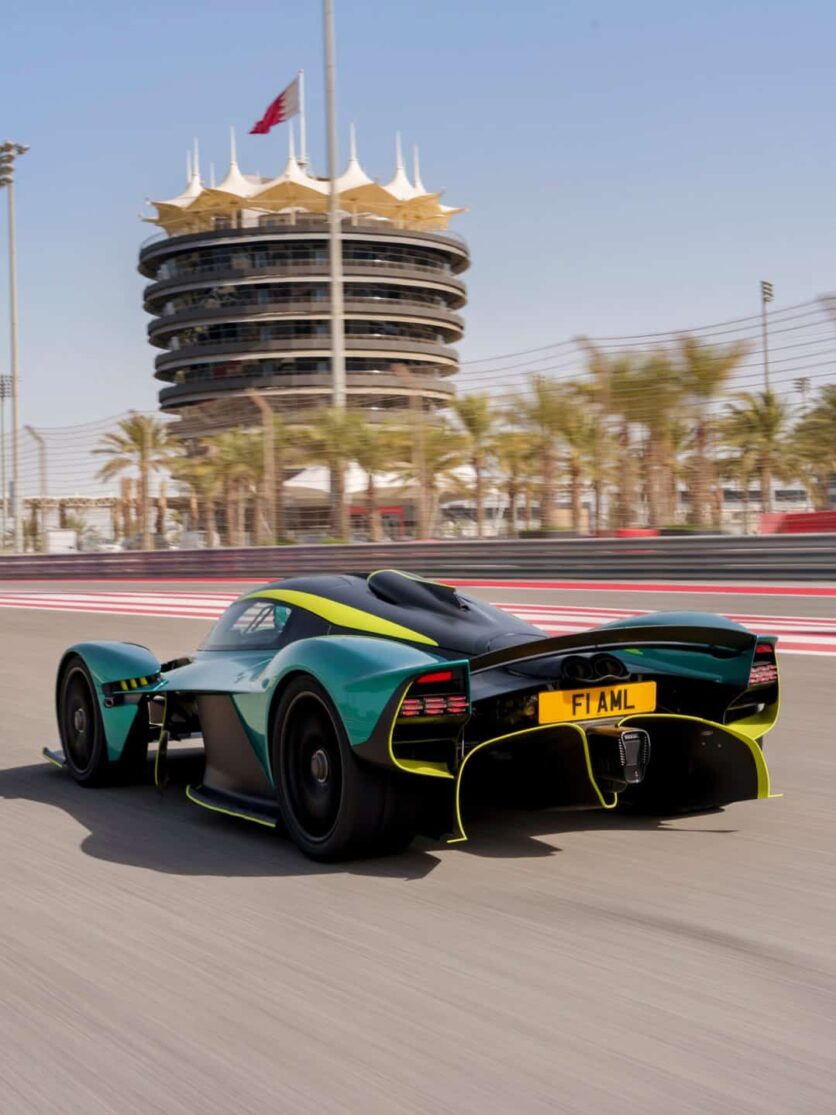
Just 150 examples of Aston Martin’s first hypercar are slated for production, plus a further 25 ‘track-focussed’ AMR Pro cars – if you’re a proper lunatic. A run of 85 roofless Spiders will be the last model off the company’s Gaydon production line in Warwickshire. All versions sold out a long time ago and there’s even a waiting list for cancelled orders.
Back in the pit, I climb out of the Valkyrie like an astronaut returning to Earth. Miles Nurnberger, Aston Martin’s director of design, is waiting to give me a hand and talk through the car’s radical shape, originally created by Adrian Newey, Red Bull’s legendary chief technical officer.
The striking aerodynamic exterior is complemented by an open underfloor. Two large channels pass around the cockpit, serving up air to the car’s massive rear diffuser. The resulting downforce is in the region of 1,100kg at 93mph.
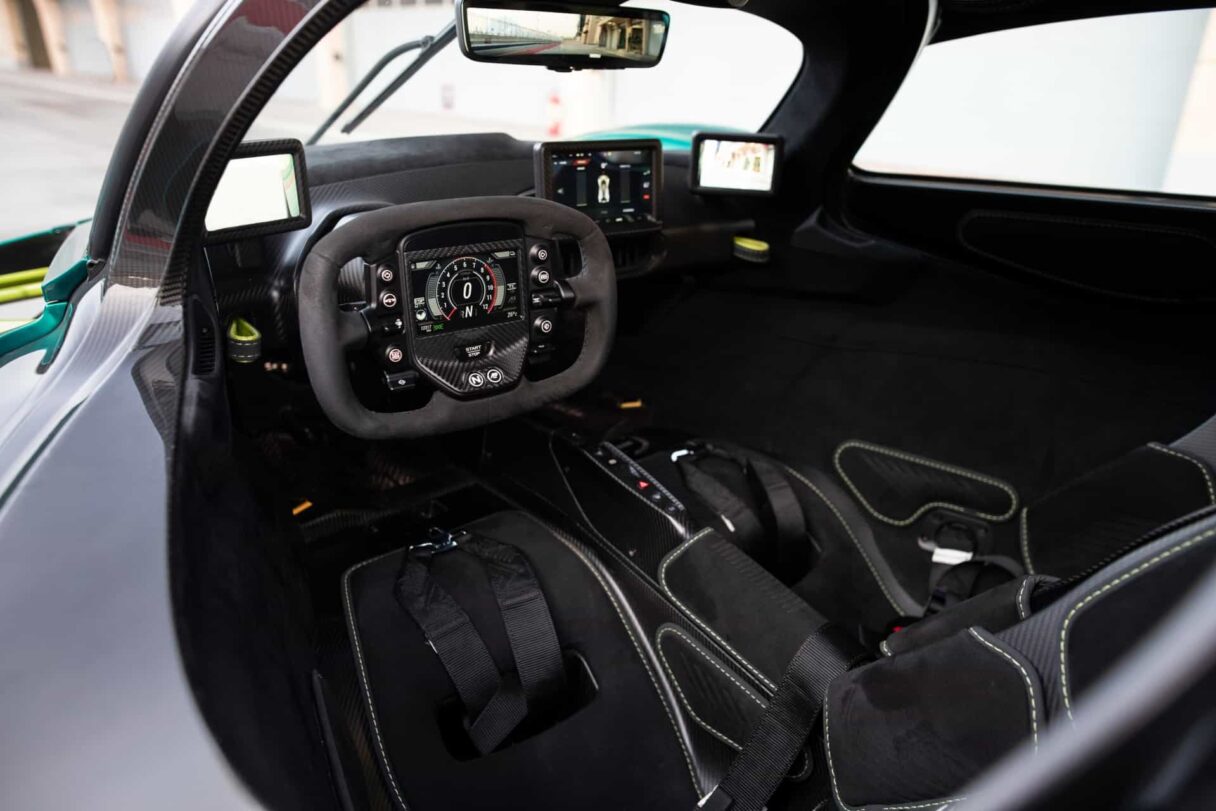
“Adrian had always wanted to design a car for the road,” says Nurnberger. “He thought that creating a road car would be less constrained by the regulations he faced in F1 and therefore easier – he soon realised it wasn’t.
“His idea was a teardrop-shaped cabin as compact as possible. It was an aerodynamic concept that challenged us every step of the way. In car design, most mornings you go to work and already know the answers. With Valkyrie, it was solving a new problem every day.”
Engineers didn’t use a single steel component in the car’s structure, which is 100 per cent carbon fibre. Every part has been on a strict diet, with magnesium alloy wheels weighing less than the tyres, the world’s smallest, high-level brake light – just 6.5mm wide – and fantastically-efficient titanium brakes with carbon-ceramic discs.
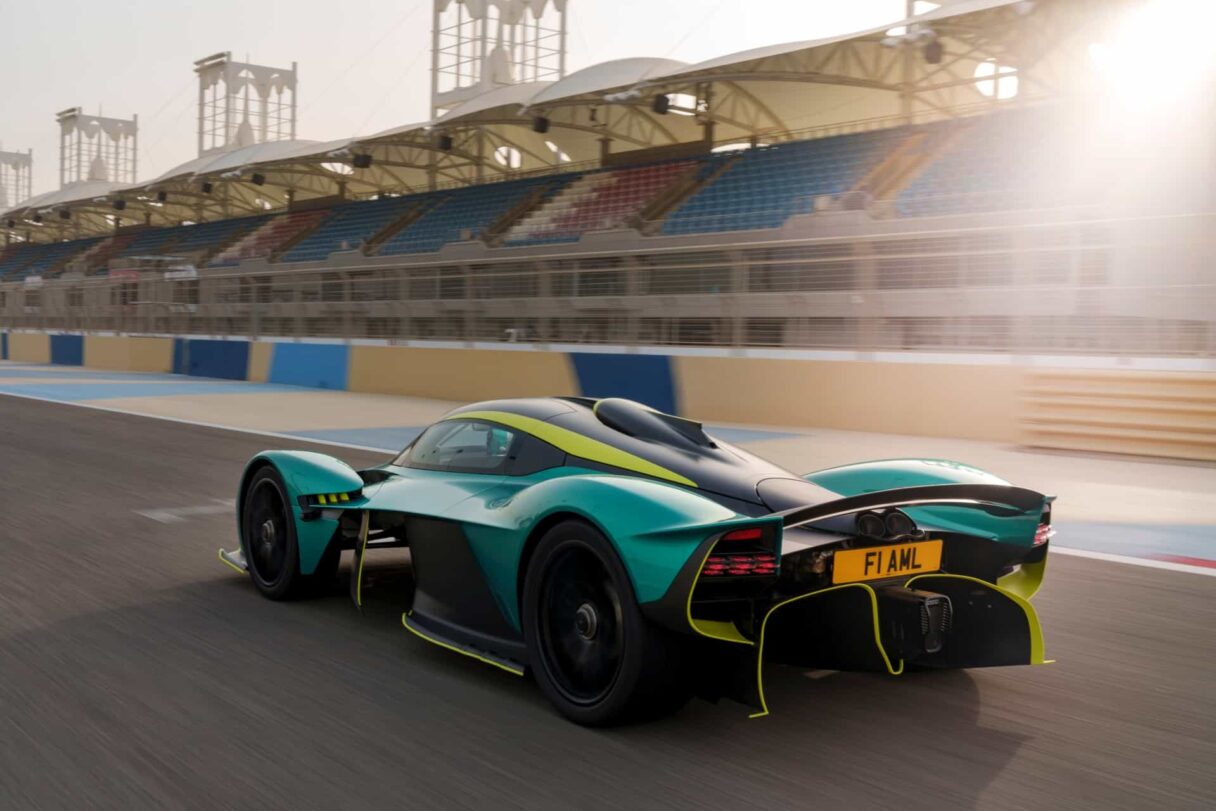
“We used so much titanium that the Ministry of Defence called from London to ask exactly what we needed it for – they thought we might be building something we shouldn’t,” chuckles Nurnberger.
Among the many conundrums facing his team was the issue of the famous Aston Martin winged badge – a logo that has adorned every one of the British marque’s cars since the 1920s. “Adrian didn’t want our badge on the front of the car because it was 6mm deep, weighed too much and created vortices that affected the aerodynamics.
“Once again it was left to the team to innovate, so we developed a metal badge that was 40 microns thick, or about two-fifths as wide as a strand of hair. It weighs 95 per cent less than the one we currently use on a Vantage. We could have designed a sticker or painted it on, but that wasn’t good enough.”
The windscreen wiper alone took more than a year to design. Sweeping water off a curved section of glass at high speed, as well as meeting strict road regulations, forced Aston Martin to scour the internet for solutions.
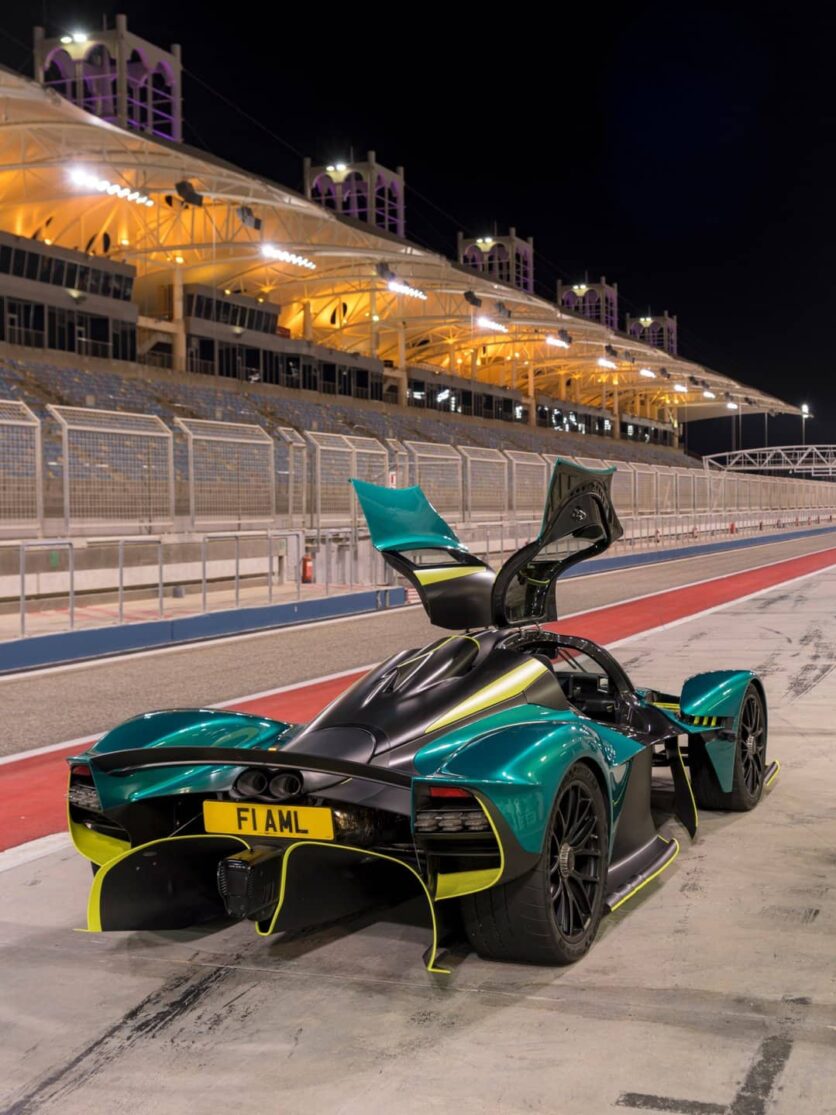
“We even challenged the regulations and spoke to firms who specialised in high-tech glass. In the end, we contacted a company that designed the windscreen on the Space Shuttle and they came up with a solution. The Valkyrie wiper actually has a torsion bar and pivots as it crosses the curved surface.”
Nurnberger is currently working on the next generation of Aston Martin models. He says each will utilise features from the Valkyrie in their design. That’s likely to include hybridisation and a number of high-performance versions, similar to the barnstorming DBX 707 super-SUV.
It sounds like it’s going to be a busy year for Aston Martin. Expect some sensational, new-generation models the like of which we’ve not seen before. I’m almost certain, however, that none will provide the thrills of the Valkyrie – an F1 car with two seats that you can drive absolutely anywhere.
Visit astonmartin.com






